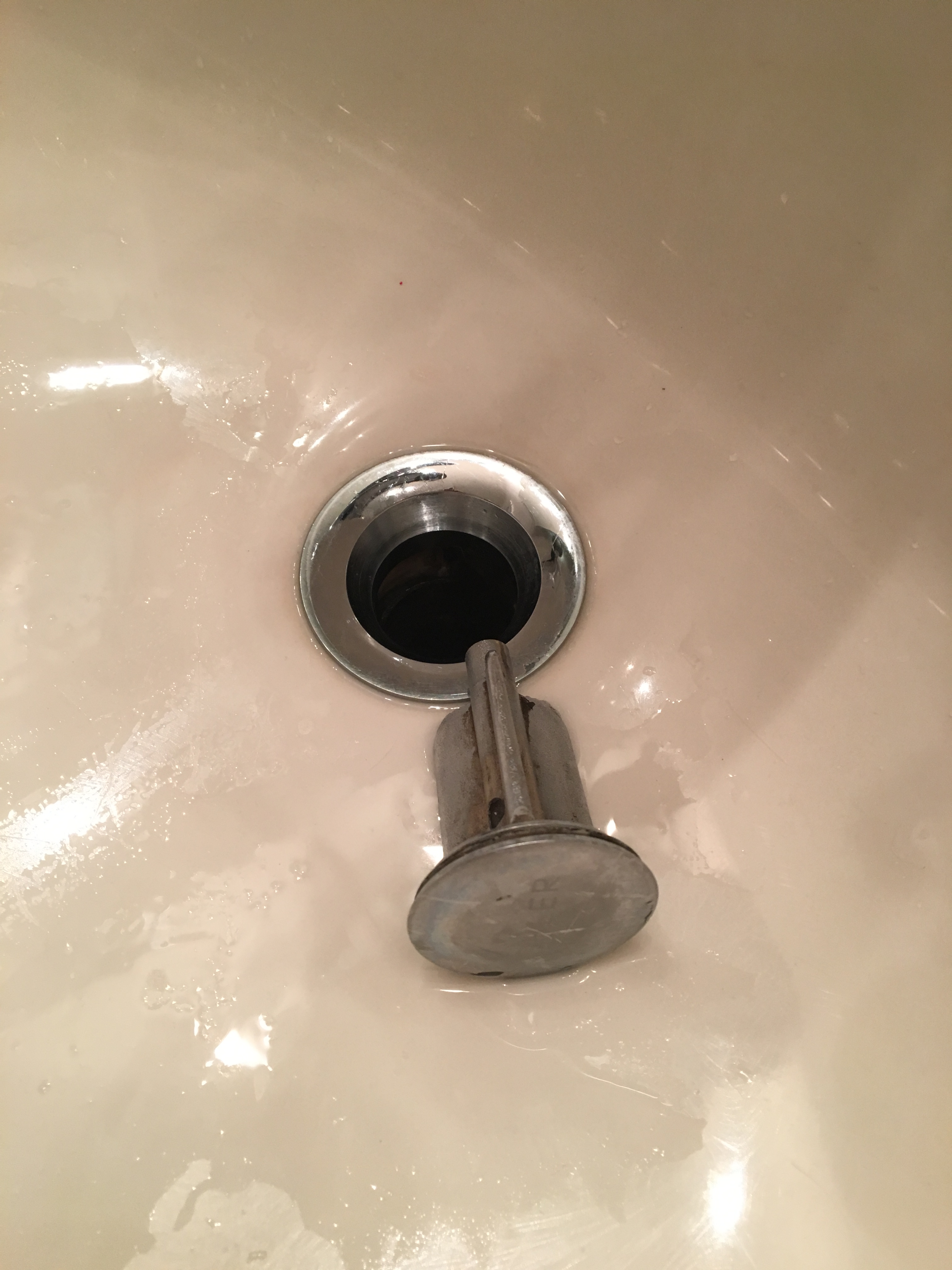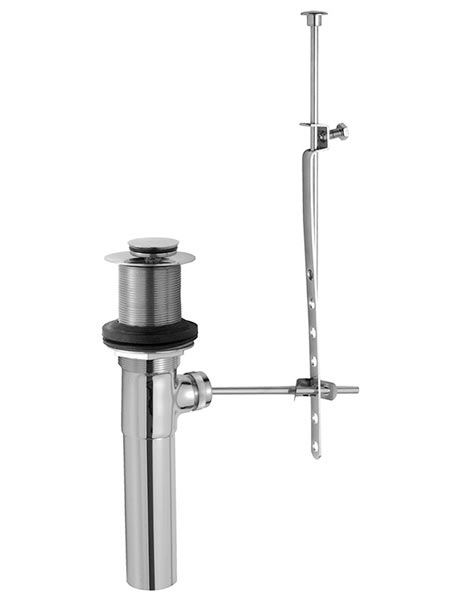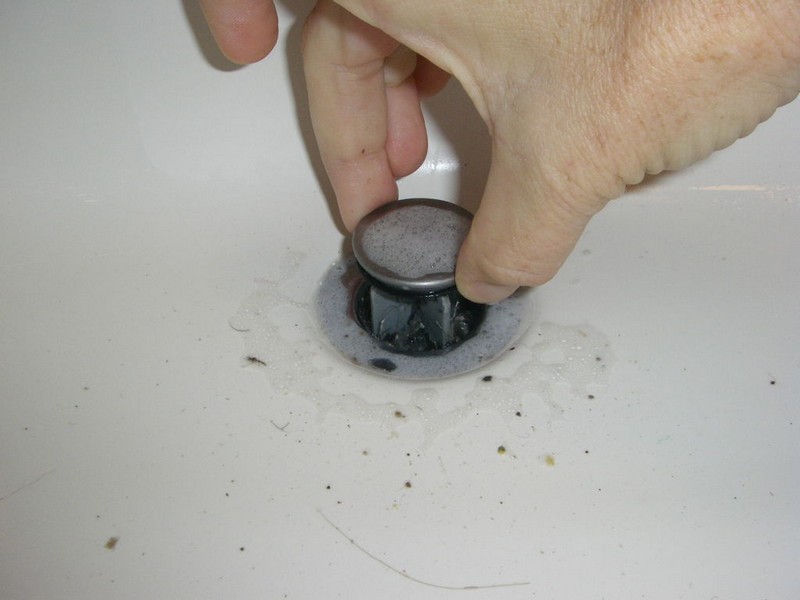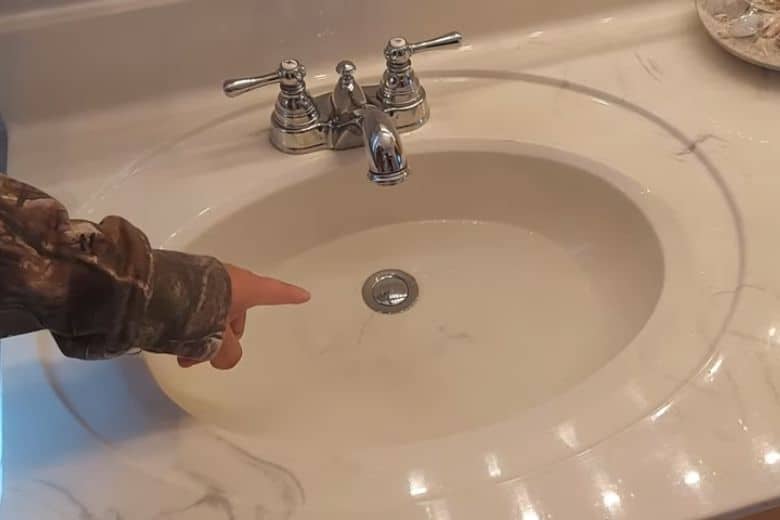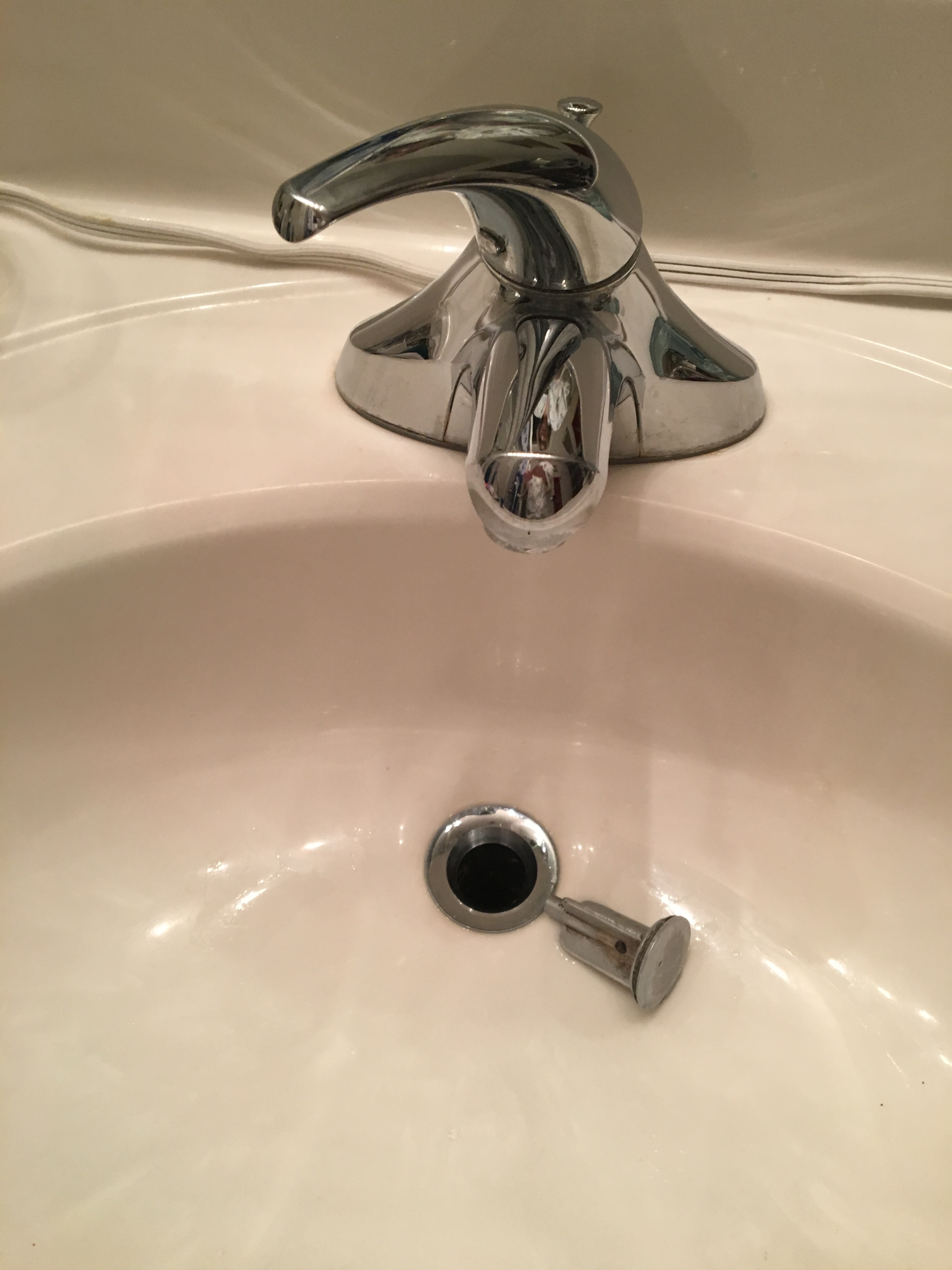If you've noticed that your bathroom sink is not draining properly, the culprit may be a broken drain stopper. This small but important piece can easily become damaged over time, causing frustration and inconvenience. But fear not, as replacing a broken bathroom sink drain stopper is a relatively simple and straightforward process. In this article, we'll walk you through the steps to get your sink back in working order.Broken Bathroom Sink Drain Stopper Replacement
Before you begin the replacement process, it's important to identify the type of drain stopper you have. There are three main types: push and pull, lift and turn, and pop-up. Each type has a slightly different mechanism for removal, so make sure to do your research before starting. Once you've determined the type, follow these steps to fix a broken bathroom sink drain stopper: Step 1: Remove the drain stopper. Depending on the type of stopper, you may need to unscrew it, pull it up and out, or lift and rotate it to remove it from the drain. Step 2: Inspect the stopper. Take a close look at the stopper to see what is causing the issue. It could be a broken lever, a damaged seal, or a buildup of debris. Step 3: Replace the damaged parts. If the issue is a broken lever or damaged seal, you can easily find replacement parts at your local hardware store or online. Make sure to bring the old parts with you to ensure you get the correct size. Step 4: Clean the drain. While you have the stopper removed, take the opportunity to clean the drain and remove any buildup of hair or debris that may be causing issues. Step 5: Reinstall the stopper. Once you have replaced any damaged parts and cleaned the drain, simply reinsert the stopper and test it to make sure it is working properly.How to Fix a Broken Bathroom Sink Drain Stopper
If the damage to your stopper is beyond repair, you may need to replace the entire unit. This process is a bit more involved, but with the right tools and some patience, you can easily replace a broken bathroom sink drain stopper yourself. Step 1: Gather your tools. To replace a broken bathroom sink drain stopper, you will need a pair of pliers, a wrench, a screwdriver, and a new stopper unit. Step 2: Remove the old stopper unit. Use the pliers to loosen and remove the nut that holds the stopper in place under the sink. Once the nut is removed, you should be able to pull the stopper out of the sink. Step 3: Install the new stopper unit. Follow the instructions that come with the new stopper unit to properly install it in your sink. This may involve attaching a new tailpipe and securing it with a nut. Step 4: Test the stopper. Once the new unit is installed, test the stopper to make sure it is working properly. Adjust the linkage and tailpipe as needed to ensure a tight seal.Replacing a Broken Bathroom Sink Drain Stopper
While it's always a good idea to call a professional for major plumbing issues, repairing a broken bathroom sink drain stopper is something that most homeowners can tackle themselves. Not only is it a cost-effective solution, but it can also give you a sense of accomplishment and save you from having to wait for a plumber to make a house call. Step-by-Step Guide for Repairing a Broken Bathroom Sink Drain Stopper: Step 1: Remove the stopper. As mentioned earlier, the first step is to remove the stopper from the drain. This will give you a better view of the issue and make it easier to work on. Step 2: Identify the problem. Take a close look at the stopper to determine the cause of the issue. It could be a broken lever, a damaged seal, or a buildup of debris. Step 3: Replace damaged parts. If the issue is a broken lever or damaged seal, you can easily find replacement parts at your local hardware store or online. Make sure to bring the old parts with you to ensure you get the correct size. Step 4: Clean the drain. While you have the stopper removed, take the opportunity to clean the drain and remove any buildup of hair or debris that may be causing issues. Step 5: Reinstall the stopper. Once you have replaced any damaged parts and cleaned the drain, simply reinsert the stopper and test it to make sure it is working properly.DIY Bathroom Sink Drain Stopper Repair
Now that you know how to fix a broken bathroom sink drain stopper, let's take a look at some common causes of this issue. By understanding the root causes, you may be able to prevent future damage and save yourself from having to make repairs. 1. Wear and tear. Like any other mechanical part, a bathroom sink drain stopper can become worn down over time and eventually break. This is especially true for older stoppers that may not be as durable as newer models. 2. Hard water buildup. If you have hard water, mineral deposits can build up on the stopper and cause it to become stuck or difficult to move. This can eventually lead to damage if not addressed. 3. Improper use. Using too much force or yanking on the stopper can cause breakage. Be gentle when using your stopper and avoid pulling on it too hard.Common Causes of a Broken Bathroom Sink Drain Stopper
If your bathroom sink drain stopper is broken, you may be able to fix it quickly and easily without having to replace any parts. This quick fix involves adjusting the linkage, the small piece that connects the stopper to the handle on the faucet. Here's how to do it: Step 1: Remove the stopper. As always, the first step is to remove the stopper from the drain. Step 2: Locate the linkage. The linkage is a thin metal rod that connects the stopper to the handle on the faucet. You may need to unscrew a nut and remove the tailpiece to access it. Step 3: Adjust the linkage. Use pliers to gently bend the linkage up or down, depending on the type of stopper you have. This will adjust the height of the stopper in the drain and may fix any issues you were experiencing. Step 4: Reinstall the stopper. Once the linkage is adjusted, reinsert the stopper and test it to make sure it is working properly.Quick and Easy Fix for a Broken Bathroom Sink Drain Stopper
If your bathroom sink drain stopper is still not working properly after attempting the above fixes, there may be a more complex issue at play. In this case, it may be best to call a professional plumber who can diagnose and repair the problem for you. Common problems that may require professional help include: 1. A stopper that won't stay up. If your stopper won't stay in the open position, there may be an issue with the lift rod or the linkage. A plumber can assess and fix the problem for you. 2. A stopper that won't stay down. On the flip side, if your stopper won't stay in the closed position, there may be an issue with the drain or the stopper itself. Again, a professional can help you find a solution. 3. A stopper that won't move at all. If your stopper is completely stuck and won't budge, there may be an obstruction in the drain or an issue with the linkage. A plumber can help to remove the obstruction and get your stopper working again.Troubleshooting a Broken Bathroom Sink Drain Stopper
Identifying and fixing a broken bathroom sink drain stopper is a fairly simple process, but it's important to take care and follow the proper steps to avoid causing further damage. By following the steps outlined in this article, you can easily determine the issue and make the necessary repairs to get your sink back in working order. If you're unsure about tackling the repair yourself, don't hesitate to call a professional for assistance. They have the expertise and tools to quickly and efficiently fix any issues with your bathroom sink drain stopper.How to Identify and Fix a Broken Bathroom Sink Drain Stopper
While it's always possible for a bathroom sink drain stopper to break, there are some steps you can take to prevent it from happening too frequently. Here are a few maintenance tips to keep your stopper in good working condition: 1. Clean your stopper regularly. This will help to prevent buildup of hair and debris, which can cause the stopper to become stuck or difficult to move. 2. Avoid using harsh chemicals. Chemical drain cleaners can damage the stopper and cause it to deteriorate over time. Instead, opt for natural cleaning solutions or a plunger to clear any clogs. 3. Use your stopper with care. Avoid pulling on the stopper too hard or using excessive force when opening or closing it. This can cause unnecessary wear and tear, leading to breakage. By following these simple tips, you can help to prolong the life of your bathroom sink drain stopper and avoid having to make frequent repairs or replacements.Preventing a Broken Bathroom Sink Drain Stopper: Maintenance Tips
How to Fix a Broken Bathroom Sink Drain Stopper

Understanding the Problem
 A broken
bathroom sink drain stopper
can be a frustrating and inconvenient issue to deal with. Not only does it disrupt the daily use of your sink, but it can also lead to bigger plumbing problems if not fixed promptly. The
drain stopper
is an essential part of your sink that controls the flow of water and prevents debris from entering your pipes. When it becomes damaged or broken, it can cause water to drain slowly or not at all, leading to standing water and potential clogs. Fortunately, fixing a broken
drain stopper
is a relatively simple task that can be done with just a few tools and some basic knowledge.
A broken
bathroom sink drain stopper
can be a frustrating and inconvenient issue to deal with. Not only does it disrupt the daily use of your sink, but it can also lead to bigger plumbing problems if not fixed promptly. The
drain stopper
is an essential part of your sink that controls the flow of water and prevents debris from entering your pipes. When it becomes damaged or broken, it can cause water to drain slowly or not at all, leading to standing water and potential clogs. Fortunately, fixing a broken
drain stopper
is a relatively simple task that can be done with just a few tools and some basic knowledge.
Gathering Your Tools
 Before you begin, gather all the necessary tools and materials to complete the task. This includes a pair of pliers, a screwdriver, a replacement
drain stopper
, and plumber's putty. It's also a good idea to have a bucket or towel on hand to catch any excess water that may spill out during the process.
Before you begin, gather all the necessary tools and materials to complete the task. This includes a pair of pliers, a screwdriver, a replacement
drain stopper
, and plumber's putty. It's also a good idea to have a bucket or towel on hand to catch any excess water that may spill out during the process.
Removing the Old Drain Stopper
 Start by removing the old
drain stopper
from your sink. Most
drain stoppers
are attached to a rod that runs through the drain pipe and connects to a lever or knob on top of the sink. Use your screwdriver to remove the screws holding the rod in place. Then, use your pliers to loosen and remove the nut connecting the rod to the
drain stopper
itself. Once the nut is removed, you should be able to pull the
drain stopper
out of the sink.
Start by removing the old
drain stopper
from your sink. Most
drain stoppers
are attached to a rod that runs through the drain pipe and connects to a lever or knob on top of the sink. Use your screwdriver to remove the screws holding the rod in place. Then, use your pliers to loosen and remove the nut connecting the rod to the
drain stopper
itself. Once the nut is removed, you should be able to pull the
drain stopper
out of the sink.
Installing the New Drain Stopper
 Once the old
drain stopper
is removed, it's time to install the new one. Start by applying a small amount of plumber's putty around the rim of the drain hole. This will help create a watertight seal when the new
drain stopper
is installed. Next, insert the new
drain stopper
into the drain hole, making sure it sits flush against the putty. Then, reattach the rod and tighten the nut to secure the
drain stopper
in place.
Once the old
drain stopper
is removed, it's time to install the new one. Start by applying a small amount of plumber's putty around the rim of the drain hole. This will help create a watertight seal when the new
drain stopper
is installed. Next, insert the new
drain stopper
into the drain hole, making sure it sits flush against the putty. Then, reattach the rod and tighten the nut to secure the
drain stopper
in place.
Testing and Troubleshooting
 After installing the new
drain stopper
, run some water to test its function. The
drain stopper
should move up and down smoothly and allow water to drain properly. If you encounter any issues, such as the
drain stopper
not moving or water not draining, double-check that all connections are secure and that the
drain stopper
is properly aligned in the drain hole.
After installing the new
drain stopper
, run some water to test its function. The
drain stopper
should move up and down smoothly and allow water to drain properly. If you encounter any issues, such as the
drain stopper
not moving or water not draining, double-check that all connections are secure and that the
drain stopper
is properly aligned in the drain hole.
Conclusion
 Fixing a broken
bathroom sink drain stopper
may seem like a daunting task, but with the right tools and knowledge, it can be a simple and straightforward process. By following these steps, you can save yourself time and money by avoiding potential plumbing issues and have your sink functioning properly again in no time.
Fixing a broken
bathroom sink drain stopper
may seem like a daunting task, but with the right tools and knowledge, it can be a simple and straightforward process. By following these steps, you can save yourself time and money by avoiding potential plumbing issues and have your sink functioning properly again in no time.

